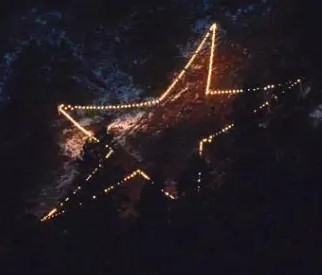- Crime Scene Drawings
- Evidence
- DNA UM1 Profile
- CoraFiles
- Horita's DNA/Bode Notes
- Drive-Stun Wounds
- FGG Policy
- Morrissey w/Silverman
- Dougherty w/Silverman
- Victim Rights Act
- Victim Shoes
- Ransom Note
- Autopsy Report
- Thomas Deposition
- JBRCE Timeline
- 911 Call
- Acronyms
- Body
- Body - Internal
- Body - Head
- Body - Neck
- Book List
- Burke Did It?
- Clothing
- Cords
- Cover Up?
- DNA/Blood
- Duct Tape
- Evidence Interpretation
- Fibers
- Foreign Faction
- Friends
- Intruder
- Intruder - Sex Offender
- Intruder - Sexual Predator
- Intruder - Aquaintance
- John Mark Karr
- Neighbors
- Patsy & John Killers?
- Patsy
- Pineapple
- Prior Abuse?
- Ransom Note
- RN Comparisons
- RN Interpretations
- RN Movie Comparisons
- RN Who Wrote It?
- Staging
- Stun Gun
- Worked for Ramseys
- Who is Who in the Case?
- pdf Library
JonBenet Ramsey Murder Case Evidence
Investigative Memo Boulder District Attorney's Office Submittal of Evidence Items to Bode Technology
Investigator: Andy Horita Victim: JonBenet Ramsey
Planning the Trip
On 11/1/07, I received a memo from Tom Bennett (then Chief Investigator for the Boulder District Attorney's office ), requesting that several printed photographs be scanned, in color, in preparation for the visit with forensic scientists at Bode Technology, located in Lorton, Virginia. The memo explained that the Lab's Case Submission Form had been completed and additional documents had been prepared for inclusion with the submission.
Also on 11/1/07, at approximately 0905 hours, I was informed that I would be designated to accompany the First Assistant District Attorney with the Boulder District Attorney's office, Pete Maguire on a trip to the Bode Technology Laboratory in Lorton, Virginia. The rationale for my involvement was that I had a working knowledge of current and historical DNA testing methodologies and was familiar with the facts of the case.
On 11/2/07, at approximately 1422 hours, I met with Tom Bennett, Bill Nagel, (Assistant District Attorney for the Boulder District Attorney's Office), and elected District Attorney Mary Lacy to discuss the items of evidence that were to be submitted to Bode Technology for re-testing. Based on budgetary limitations, 5-6 tests could be run. Bennett stated that he learned from the Colorado Bureau of Investigation lab that they would not be willing to test the ropes/cords associated with the victim, and that the known reference sample data would not be provided to our office.
On Tuesday 11/6/07, I received an email message from Tom Bennett, regarding a meeting he was coordinating with forensic scientists at Bode Technology laboratory, located in Lorton, Virginia. I learned from conversations with Chief Investigator Bennett that this private lab, in particular, was recommended by the Director of the Denver Police Department's Crime Laboratory, Greggory LaBerge. Also, based on Bennett's conversations with Detective Sergeant Tom Trujillo, from the Boulder Police Department, and Steve Adams, Criminalist with the Arvada Police Department, Bode Technology was the recommended laboratory in the country for its use of cutting-edge DNA analysis methods.
The email explained that items of evidence had been identified for re-submittal for possible trace DNA analysis. In addition, a case summary and submittal packet were being prepared in advance of a meeting, to be held at a later date, with (then Investigator) Andy Horita, and Pete Maguire. I began the process of identifying the most useful, relevant, and concise case presentation possible in order to prepare a PowerPoint presentation for the meeting. Additionally, I was involved with scanning any photographs that would be useful to the forensic scientists.
On 11/13/07, I received another email message from Tom Bennett regarding the scheduling of a meeting with forensic scientists from Bode Technology. The email indicated that Boulder PD Sgt. Tom Trujillo was provided with a list of evidence items needed during the week of 11/5/07, regarding the evidence items that were being requested. Bennett completed a memo describing the case investigation and the history of the forensic testing of each of the items to be submitted. Additionally, the autopsy report, floor plans, DA case summary draft, and Boulder PD case summary were to be provided.
At that point, I was in the process of completing the preparation of the PowerPoint presentation and summarizing the DNA results. Specifically, I created a color chart showing the STR DNA profiles and incorporated that chart into the PowerPoint Presentation.
On 11/16/07, airline reservations were made for Andy Horita and Pete Maguire, to depart via Frontier Airlines on 12/2/07, at 0835 hours, and to arrive at Washington, DC's Reagan National Airport at 1350 hours. The return leg of the flight was scheduled to leave Reagan National Airport on 12/4/07, at 1435 hours, and to arrive at Denver at 1636 hours.
Also, on 11/16/07, I learned from District Attorney Administrative Deputy Susan Ingraham, that two rooms at the Hampton Inn, in Woodbridge, Virginia had been booked for Maguire and Me.
On 11/27/07, at approximately 1147 hours, I spoke with Shannon Evenstad, at Bode Technology regarding the logistics we would be requiring for our all-day meeting with the forensic scientists. Specifically, I requested that a projector and speakers be reserved for use during our meeting. I was advised that Maguire and I were to check in at the front desk of the lab prior to our meeting, and that we would be required to provide a buccal swab and sign a consent form prior to entry into the lab.
On 11/29/07, I received an email message from Boulder PD Det. Sgt. Tom Trujillo, informing me that the requested evidence items will be ready for my pickup on Friday, 11/30/07. Additionally, Trujillo prepared photocopies of CBI lab notes from Agents Joe Clayton in serology and Kathy Dressel in the DNA section.
At approximately 1500 hours on 11/29/07, I presented a draft version of the PowerPoint presentation to Tom Bennett, Bill Nagel, and Pete Maguire in order to benefit from their feedback and make any necessary changes to the contents of the presentation. Nagel clarified that it was his recollection that the father of the victim, John Ramsey, removed the wrist ligature from the victim's left hand soon after discovering the body, and that Mr. Ramsey removed the duct tape from the victim's mouth. Later, Fleet white picked up the duct tape and dropped it. Nagel also mentioned that no cord or duct tape matching those found on the victim were found within or around the Ramsey home.
On 11/30/07, at approximately 1042 hours, Tom Bennett sent, via fax, the 2-page Bode Technology Case Submission form, along with a 6-page case overview. The case submission form listed the following items to be submitted for testing: 1. Ligature from neck. BPD #22TET, CBI # 008 2. Broken paintbrush handle (attached to #1 above) 3. Ligature from right wrist. BPD #018TET, CBI #166 4. Black duct tape. BPD # 010 KKY, CBI #15) 5. White long underwear bottoms. BPD #020, CBI #6
Although the 6-page case overview was prepared entirely by Bennett, he listed my name as the author (see page 6), because I was to be the investigator accompanying the evidence to the lab and providing the case overview presentation. I noted, after the fax had been sent, that the sentence on page 3, which states, "The Boulder DA Office has not been provided the sequence of the STR analysis of DNA obtained from the Ramsey family members," was not accurate. I discovered the known profiles for the Ramsey family members within the materials prepared by the Boulder Police Department, and delivered in electronic format, upon an earlier request by the elected District Attorney, Mary Lacy (then Keenan) several years prior.
Also in the 6-page case overview that was prepared by Bennett (see page 3), was a reference to "Colorado Bureau of Investigation Specimen number GSLDPD99178617," however it should be noted that the Denver Police Department's Crime Laboratory completed the analysis of the sample in question and developed the STR profile that was uploaded to the CODIS database. Also, the specific profile that was developed by the DPD crime lab, and uploaded to CODIS, was not the distal stain from CBI item number 7-2.
Bennett's case summary also notes that the Colorado Bureau of Investigation's lab declined to conduct DNA analysis of the garrote "due to the high probability of a DNA mixture being present on the garrote as a result of all persons who have handled the item from the point of manufacture to present." It should also be noted that in the course of preparing the case overview presentation for the Bode forensic scientists, I noticed that the forensic knot expert from the Royal Canadian Mounted Police, Corporal Van Tassel, appeared to not be wearing protective gloves in photos depicting his analysis and reconstruction of the knots. Also, the paintbrush piece that was used to construct the knot was depicted in the photographs of the un-gloved knot expert.
Additionally, on page 6 of Bennett's summary, he states that the long underwear bottoms worn by the victim had not been examined for DNA. My review of the case data indicates that cuttings were taken from the elastic waistband of the long johns by the CBI and tested for the presence of foreign DNA. The serology portion was completed by CBI agent Joe Clayton on 1/9/97. The DNA testing was completed on 5/27/99, but an interpretable profile was not developed using DQAI/PM kits.
The case summary mentions a rope that was found "on a bag on a chair" in the guest bedroom of the Ramsey home. This item may or may not have been found on a chair from the guest bedroom. The notations in the Boulder PD case file are not clear and the single photograph of the area prior to the search does not provide sufficient detail to identify the presence or absence of a bag.
On 11/30/07, I received an email message from Tom Bennett advising me that the case submission form had been received by Bode, and that the evidence items will be ready for pickup at the Boulder Police Department's Property and Evidence Section.
Also on 11/30/07, I received a photocopy of Colorado Revised Statute section 24-72-305.5, which refers to "Access to records-denial by custodian - use of records to obtain information for solicitation." Bennett advised me that the statute should be discussed with representatives from Bode and a signed statement should be obtained regarding the potential use of the documents we were providing to them and the limitations created by the statute.
On 11/30/07, at approximately 1526 hours, I spoke with Boulder Police Department Property and Evidence Technician Lucy Batton, and learned that the requested evidence items were ready to be picked up. At approximately 1545 hours, I arrived at the BPD Property and Evidence section to retrieve the requested evidence items. At approximately 1549 hours, I took possession of the following items: 022TET - Neck Ligature, 018TET - Wrist Ligature, 010KKY - Black Duct Tape, 020TET - White Long Underwear Bottoms, 021TET - Wednesday Panties.
The items were transferred to a clean, dry, rolling suitcase. The items remained in their original sealed packaging and were not exposed to extreme temperatures, excessive moisture, or radiation. A zip tie was used to secure the zippers on the suitcase. The zip-tied suitcase remained in my control continuously until the evidence items were delivered to Bode Technology.
Making the Trip
On 12/2/07, I arrived at the Frontier Airlines ticket Counter at the Denver International Airport and presented my credentials to Frontier Aviation Security Coordinator Melissa Lucken and Transportation Security Administration Supervisor Victor Androvich. I explained to them that I was in possession of items of evidence in a sealed rolling suitcase and would prefer that the seal not be broken during the trip. Androvich advised me that the contents of the suitcase would have to be searched in some way, and I agreed to allow it to go through the normal carry-on screening, rather than breaking the chain of custody and potentially contaminating the evidence.
On 12/3/07, at approximately 0900 hours, Maguire and I arrived at the Bode Technology reception desk (10430 Furnace Road, Suite 107, Lorton, Virginia). We were provided with a security form, issued visitor credentials, and submitted two reference DNA samples (using a sterile cotton swab and a proprietary Bode collection kit).
At the entrance, we were met by Casework Supervisor Angela Williamson, who escorted us to the second-floor conference room where the meeting was to take place. We then met Casework Analyst Amy Jeanguenat, and briefly spoke with Maureen Loftus (then president of the company). During the conversation with Loftus, we were assured media contacts would be referred back to our office until such time as other arrangements were made. In the meantime, Bode would say nothing" either confirming or denying that their lab had received evidence associated with the Ramsey investigation. I provided Loftus with the form letter outlining the statutory provisions of 24.72.305.5, C.R.S., limiting the use of criminal justice records for soliciting business for pecuniary gain. Loftus and I signed the form and Loftus excused herself from the meeting.
The Meeting
During the initial phase of the meeting, Williamson and Jeanguenat briefly described the history of Bode Technology and noted the work that the company did to identify the remains of the victims of the 9/11/01 attacks.
Over the approximately three hours from 0900 hours to 1200 hours, I presented Williamson and Jeanguenat with a PowerPoint presentation summarizing the facts and controversies surrounding the Ramsey case. A video clip was used to illustrate the geographical location of the Ramsey home and the surrounding Boulder landmarks. Next, a video clip was shown from a Court TV documentary that aired in July of 2006. Photographs and brief biographical information regarding the four individuals who were known to be in the Ramsey home on the night of the murder were shown. A brief mention was made of some of the extended family members, as well.
An overview of the crime scene was provided, including the approximate square footage of the levels of the home and photographs of the scene taken by the Boulder Police Department shortly after the scene was secured. It was noted that the photographs address one of the controversies regarding the absence of "footprints in the snow."
The next series of slides depicted "floor plan diagrams with hyperlinked photographs depicting the different areas of the crime scene. A brief discussion of the ransom note and the forensic analysis completed on it was next. The three pages of the ransom note were displayed.
A second video clip from the Court TV documentary discussed the ransom note further. A 3-D computer animation of the floor plan was included in the clip. The autopsy report was discussed next, including the official cause of death statement. Four photographs from the autopsy were included, along with a photograph from the CBI showing the Wednesday underwear and the cutting that was removed from it.
A third video clip from the Court TV documentary was played. The clip included a discussion of the autopsy report, the garrote, skull fracture, Dr. Werner Spitz's interpretation as a patterned injury, the flashlight recovered from the Ramsey home, the broken paintbrush handle, the stun gun hypothesis, Dr. Michael Doberson's opinions, a discussion of the basement window, the black duct tape, and the fact that no ropes or cords we're found in the home that matched the ones used to construct the garrote or wrist ligatures.
A discussion and analysis of the types of knots used was next. The presentation included video clips produced by Corporal John Van Tassel from the Royal Canadian Mounted Police, and still images that I took of myself illustrating the step-by-step construction of the knots using a much larger diameter rope. Following the discussion and illustration of the knot construction, photographs depicting Corporal John Van Tassel's knot analysis appeared to show an un-gloved hand and bare arms in the photographs. We briefly discussed cross-contamination issues.
A general summary of the DNA testing was next. It should be noted that although the slide summarizing the Denver Police Department's DNA results and possible interpretation issues raised by the mixture profile referred to the "distal portion of stain 2" (slide 45), the actual profile that was developed by Denver PD's lab did not rely on the distal stain. Rather, the profile was developed from the 7-2 stain. Therefore, the word "distal" was erroneously included in the presentation and a note of this error was made during the presentation.
Following the PowerPoint presentation, I presented Williamson and Jeanguenat with a chart summarizing: the mixture profile data developed by Gregg LaBerge at the Denver Police Department crime lab, the victim's known profile, and the interpreted suspect's contribution to the mixture (per the uploaded CODIS forensic unknown profile). The two analysts briefly examined the chart and made markings on the interpreted suspect's contribution to the profile as they discussed whether they agreed with or had questions about the interpretations that were made.
Generally speaking, Williamson and Jeanguenat stated that they would not feel comfortable reporting that an individual was a major or minor contributor to a mixture when the ratio of the two suspected profiles was less than 3:1. It would be possible to "condition out" the victim's contribution to a profile if the circumstances justified it.
When asked, Jeanguenat stated that she saw no indication that a third party contributed to the mixture and would "testify in court" to that effect. They noted that the imbalance at the amelogenin locus was "not surprising." Further, it was their opinion, based on a cursory look at the chart, that the 29 allele call was "iffy." It was their suggestion that the profile be searched at that locus with (31.2, ' '). Similarly, the analysts indicated a question regarding the 12 allele call at the D5S818 locus. When asked about the apparent lack of concordance at D7S820, Williamson and Jeanguenat both stated that the result was not surprising based on their experience and training. Despite their questions regarding the two allele calls, Williamson noted that the interpretation might have either left off those alleles or that they "might be right anyway."
They noted that a relatively new testing kit called Identifiler, made by Applied Biosystems, could be used in lieu of the same company's two kits (Profiler Plus or COfiler kits). The benefits of using the Identifiler kit include the fact that all 13 core CODIS loci can be amplified using a single kit and a smaller amount of input sample is necessary. Williamson stated that approximately 80% of Bode's casework is done using the Identifiler kit. One difference with the Identifiler kit is that it amplifies two additional STR loci, namely D2S1338 and D19S433. Similarly, a newer testing kit, also made by Applied Biosystems, called MiniFiler, was designed to amplify the larger STR loci, thus improving the chances of developing a profile from degraded DNA samples. While the Identifiler kit has been used in court and Jeanguenat has testified regarding its use, the MiniFiler kit has not yet undergone trial Court scrutiny.
Williamson mentioned that the flashlight recovered from the Ramsey home could be swabbed for the presence of "touch DNA," and that the presence of fingerprint powder would not inhibit the amplification. She noted that she has had success using the "touch DNA" method to recover the male offender's DNA profile from a swab of the female victim's pubic hair shaft in a sexual assault case. She described the "touch DNA" collection procedure as: stretching the fabric substrate to be tested, using a sterile scalpel blade to scrape the surface material, and collecting the fiber for analysis. Williamson noted that she has had a roughly 80% success rate with the technique when used on the exterior surface of victim's clothing, and has used the technique to develop a profile of a "serial groper" in Queensland, Australia (where Williamson previously worked as a forensic scientist).
The analysts discussed the different serological tests that could be used to test for different biological material and noted that fluid sources were generally more DNA-rich than non-fluid sources. Williamson asked about the specific test that was used by the Colorado Bureau of Investigation to screen for the presence of amylase, a protein commonly found in saliva. The testing method used would determine the best course of action with respect to subsequent "touch DNA" testing. In one method, an adhesive screen is placed over the substrate. If such a method were used, touch DNA testing would not have a high likelihood of success.
On 12/3/07, at approximately 1339 hours, I reached the Colorado Bureau of Investigation Laboratory Agent in Charge, Ron Arndt, and spoke with him via speakerphone. Arndt stated that the CBI lab was in the process of evaluating the use of either the Identifiler kit, or a similar kit made by a different manufacturer, Promega Corporation's PowerPlex 16 kit. At that point, Arndt had not determined which kit is "better." I asked Arndt to describe the serological testing methods in place at his lab around 1997. He stated that cuttings would have been taken of clothing that tested presumptively positive for saliva, semen, or other fluids. When asked, he stated that his lab would not have used the Phadebas test kit, which would have obliterated any touch DNA.
At approximately 1315 hours on 12/3/07, the evidence-containing rolling suitcase was opened by cutting through the zip tie securing the zipper pulls. The following items were then turned over to the Bode Technology evidence technician: Neck Ligature, Paintbrush handle, Wrist Ligature, White Long Underwear Bottoms, Wednesday Panties.
Note that although BPD evidence item 010KKY, the black duct tape, was transported to the Bode Technology laboratory along with the other evidence items listed above, it was determined that it was not as suitable for DNA testing as the other items. Therefore, item 010KKY was returned to the zip-tied rolling suitcase, maintained within my custody and control, and ultimately returned to the Boulder Police Department's Evidence section.
Next, Williamson went into the forensic serology room within the Bode Technology lab. After donning a clean lab coat, hair net, gloves, mask, eye protection, and undergoing footwear decontamination, Maguire and I followed Williamson into the small, secure room. Maguire and I observed from an approximate distance of three feet from the evidence items as Williamson removed item 021TET from the sealed, intact packaging. She noted that the cutting from that item was not contained within the packaging. Next, Williamson examined the evidence items packaged together as 022TET. It was noted that the brush end of the paintbrush was not packaged with the neck ligature and paintbrush handle (middle section). The items were then re-sealed, and Williamson, Jeanguenat, Maguire and I returned to the conference room to discuss a plan of action.
Williamson stated that the cutting from item 010KKY should be located and sent to the Bode laboratory via FedEx shipping. Re-testing the underwear would be the first priority. She decided to test the long underwear bottoms for possible touch DNA as the second priority. A third priority would be to test the brush end of the paintbrush (which was not included among the items I provided to Bode).
At approximately 1700 hours, Maguire and I left the Bode Technology facility and returned to our hotel.
Back in Boulder
On 12/13/07,I received an email message from Bode Technology Forensic Casework Supervisor Angela Williamson regarding several issues that were identified as needing to be addressed prior to the start of the testing. Specifically, Williamson wanted to know if their lab would be authorized to use either the Applied Biosystems Identifiler STR DNA test kit, or Promega's PowerPlex 16 kit. Similarly, a question arose about the potential use of Applied Biosystem's MiniFiler STR DNA kit, which has been shown to be useful with degraded DNA samples. Williamson also noted that the cutting from the crotch of the underwear that had been submitted was not included with the underwear itself. The brush-bearing end of the paintbrush was also requested. Additionally, Williamson requested the known reference samples related to the case and the raw data from the Colorado Bureau of Investigation and the Denver Police Department's Crime Laboratory.
On 1/7/08, at approximately 1638 hours, I spoke with Boulder PD Detective Sergeant Tom Trujillo about acquiring the cutting from the crotch of the underwear (item 010KKY), and item A11-032BI 021KKY, the brush end of the paintbrush. Trujillo informed me that he would research the matter and get back with me.
On 1/18/08, at approximately 1112 hours, Trujillo informed me that the cutting from the crotch of the underwear (item 010KKY), was packaged with the extract material. Trujillo said that he will be in contact with me to arrange the release of this item from the Boulder PD Evidence section.
On 1/22/08, at approximately 1131 hours, I spoke with Trujillo about the cutting from the crotch of the underwear (item 110KKY), and item 021KKY, the brush end of the paintbrush. Trujillo stated that the cutting from the crotch of the underwear was located within the Boulder PD Evidence section. The brush end of the paintbrush, however, appeared to be housed at "a private lab" where attempts had been made to match the wood material to the material found in the victim.
On 1/22/08, at approximately 1556 hours, I returned evidence item 010KKY, the black duct tape, to the Boulder PD Evidence section. The evidence item had been maintained within a locked evidence cabinet, and further secured with a zip tie, since it was re-secured at the Bode Laboratory on 12/3/07.
Also on 1/22/08, at approximately 1556 hours, I collected evidence item 110KKY, the cutting from the crotch of the Wednesday underwear (the underwear item is identified as item 021TET). Item 11OKKY was then packaged in a clean FedEx box and sent to Bode Technology along with the required Case Submission Form.
On 1/30/08, I sent an email to Williamson requesting a status update on the testing. In reply, Williamson explained that their lab had been engaged in an ISO audit, and outlined the plan for testing. The plan was to use the Applied Biosystems Identifiler STR DNA test kit to examine the cutting from the crotch of the underwear and, as a second step, the waistband areas of the long johns.
2/11/08 Hi Andy, I have completed testing of the cuttings from the crotch. At this point I was not able to reproduce the mixture profile; I only have data consistent with JonBenet with no indication of a mixture. From here we could go back to the actual underpants. It appears the area where the mixture DNA profile was obtained from was on the edge of the cutting from the crotch. We could match up the cutting and determine a larger area from the underwear to cut. Going forward what would you like the next step(s) to be: test vaginal/anal swabs, test long johns, resample underwear -Amy
On 3/25/08, I received via FedEx envelope containing the Bode Technology case file relating to the testing of the "White long underwear bottoms. BPD020TET, CBI #6," identified by Bode as item 2807-101-05. Four samples were collected from this item and individually identified by appending a letter (from A-D) to the end of their sample number. The samples were taken from the (A) exterior top right half of long johns, (B) exterior top left half of long johns, (C) interior top right half of long johns, (D) interior top left half of long johns. The report indicates that DNA analysis of the exterior top right and left portions of the long johns reveal the presence of a mixture that includes the victim and one or more male contributors. Notably, the profile developed by the Denver PD, and previously uploaded to the CODIS database as a forensic unknown profile and the profiles developed from the exterior top right and left portions of the long johns were consistent. Therefore, the male contributor to the CODIS profile could not be excluded from having contributed to the mixture developed from these samples.
On 3/27/08, at approximately 0845 hours, I spoke to Williamson about the laboratory report I received on 3/25/08. It was her opinion that the serological source of the profile developed from the two samples that matched the CODIS profile was probably not a fluid, but the result of touch contact with those areas of the item. When asked about the possibility of testing for the male contributor's racial background, Williamson noted that due to the fact that the profile obtained was a mixture it may not be possible to perform such a test.
I then asked Williamson about the history of "touch DNA" testing. She stated that she introduced the technique to the Bode laboratory in July of 2007. Prior to that, she had used it successfully in Australia. She noted that in a particular case involving a "serial groper" she was able to develop the suspect's profile from touch DNA analysis of the victims' clothing. The success of the technique depends on how long the contact was made and how much DNA the depositor sheds. She explained that the touch DNA technique involves shaving the outer surface of a substrate (such as clothing), rather than cutting out a sample of the material. With the cutting method, the wearer of the clothing's DNA profile often overwhelms or masks the profile of the touch depositor. Williamson suggested that a database search be conducted to compare the unknown male profile to deceased victims of homicides or suspicious suicides. She noted that such searches have resulted in database matches in Baltimore, Maryland.
On 4/9/08, at approximately 1112 hours, I spoke with Bode Technology Casework analyst Amy Jeanguenat regarding submitting additional items of evidence for DNA testing. It was agreed that the hem area of the Barbie nightgown, found near the victim's body, could be tested for touch DNA.
On 4/9/08, at approximately 1148 hours, I requested the Barbie nightgown from Boulder PD Det. Sgt. Tom Trujillo. This item was previously identified as BPD item number 12KKY, and CBI number 17.
On 4/17/08, at approximately 1358 hours, I received Boulder PD evidence item 12KKY, the Barbie nightgown, in a sealed, intact evidence bag, from BPD Property and Evidence Technician Lucy Batton. The evidence item was then placed into a clean, unused, FedEx Pak and shipped via FedEx Priority Overnight to the Evidence Department of Bode Technology in Lorton, Virginia. Also included in the package was the 2-page Case Submission form and color photographs of the front and back of the evidence item that were taken by the CBI after cuttings from the item were taken and analyzed by that lab approximately 10 years prior.
On 5/15/08, I received the case report and invoice from Bode Technology regarding the testing of the Barbie nightgown (BPD evidence item 12K.KY).
On 5/21/08, at approximately 0933hours, I spoke with Williamson about the serological source of the touch DNA profile she developed from the exterior right and left sides of the white long johns worn by the victim. She stated that the scraping technique she used avoided any area of staining. She did not attempt to determine the serological source of the samples, but did not believe that the source was saliva. Williamson did not believe that the DNA profiles from the exterior right and left portions of the victim's long johns and the profile from the inside of the crotch of the underwear were both deposited via contamination from the autopsy table. She noted that she believed the serological source of the DNA profile developed from the underwear was "probably saliva."
On 6/12/08, at approximately 1444 hours, I spoke to Williamson and requested that she complete a statistical analysis of the profile she developed from the long underwear bottoms.
On 6/24/08, I received a report from Bode regarding the statistical probability of selecting a random, unrelated individual who would be included as a possible contributor to the mixture found on the exterior top right half of the white long underwear bottoms at four of the CODIS loci.
On 9/11/08, at approximately 0858 hours, I received a FedEx package from Bode Technology. I then placed the sealed box into a locked evidence cabinet in the Investigations Unit of the Boulder District Attorney's Office.
On 9/26/08, at approximately 1305 hours, I removed the FedEx package from Bode Technology and photographed the contents of the box. Contained within the box was a Chain of Custody form listing the following evidence items…
I verified that each of the above items were contained within the box and photographed their condition. In addition to the evidence items were 12 small plastic vials containing the dried DNA extracts. A memorandum was included with the packaging stating that, "The dried down extracts may be stored at room temperature."
On 9/26/08, at approximately 1357 hours, I re-sealed the box after removing BPD evidence items 022TET (the neck ligature), and 018TET (the wrist ligature). The sealed evidence box, and aforementioned evidence items were then returned to the locked evidence storage cabinet.
On 10/9/08, at approximately 1143 hours, the following evidence items were returned to the Boulder Police Department’s Property and Evidence Section.
History of Items Submitted to Bode Technology for DNA Analysis - November 2007
Garrote:
Composed of white colored cord, Olefin (polypropylene) braided, wrapped 6 times around a paintbrush handle (about 4 1/2 inches in length) to form a knot. This knot was located at the back of the victim's head. The end of the cord attached to the paintbrush handle was singed. The opposite end was formed by making a loop then tying an overhand knot with a left hand chilarity. The loop could then be tightened by pulling on the standing part, thus forming a loop that encircled the neck/throat of JonBenet. The knot holding the broken paintbrush in place was about 17" from the knot forming the loop encircling the victim's neck/throat area. Head hair matching the victim's head hair, was found entwined in the knot at the back of the victim's head or the knot affixing the broken paintbrush handle to the garrote. A knot expert with the Royal Canadian Mounted Police analyzed the formation of the knot. Two (2) areas of stain on the cord were cut out and the Colorado Bureau of Investigation analyzed the cuttings for DNA. The DNA from the 2 stains matched the victim's DNA. Other than the 2 cuttings, no other portion of the garrote cord has been analyzed for DNA. The cord did not match any similar cord located in the Ramsey home. John Ramsey carried his daughter up a flight of stairs after discovering her body. John Ramsey may have touched the garrote. Persons standing over the deceased were crying. No one was wearing gloves. The CBI declined to conduct further DNA analysis of the garrote due to a high probability of a DNA mixture being present on the garrote as a result of all persons who have handled the item from the point of manufacture to present.
Paintbrush Handle:
The paintbrush handle used in the formation of the garrote, was broken on either end. This section of paintbrush handle measured about 4 1/2 inches in length. Portions of a broken paintbrush handle were found in a paint tray in the basement area of the Ramsey home. The broken portions of the paintbrush handle found in the paint tray matched the broken paintbrush handle found in the garrote. The paintbrush handle and broken pieces also had paint spatter on them, consistent with paint spatter in the paint tray. The paint tray and contents belonged to the Ramsey's. Patsy enjoyed painting as a hobby. No blood was indicated on the paintbrush handle. No fingerprints suitable for identification purposes were developed from the paintbrush handle. No DNA was developed from this item.
Ligature from Wrists:
Composed of white colored cord, Olefin (polypropylene) braided, similar in size and construction with the cord used in forming the garrote. When her father found JonBenet Ramsey, a ligature was attached to each of her wrists. Both ends of the wrist ligature were frayed. John Ramsey removed the ligature encircling his daughter's left wrist. The ligature encircling JonBenet's right wrist was loosely tied. Both knots remained intact. The knot encircling the victim's right wrist was tied loosely over her long sleeve white pajamas. Distance between the two loops measured about 15 1/2 inches. The knot attached to JonBenet's right wrist was a larks head knot also known as a cow hitch or a capsized reef knot or more commonly a square knot. The knot that had been removed from the victim's left wrist by Mr. Ramsey was a "Z" noose with the standing part pulled through the center of the noose knot, which allowed the pulling together of the wrists. No DNA was developed from this item.
Black Piece of Duct Tape:
The duct tape affixed to the mouth of JonBenet, was black in color and torn at each end. The duct tape did not match other black duct tape recovered from the Ramsey home. Black duct tape found on the back of wall mounted paintings, differed in thread count and a difference in the color of adhesive. John Ramsey removed the duct tape from JonBenet Ramsey's mouth. He placed the duct tape on the white colored blanket that JonBenet was lying on. Fleet White, Jr. entered into the basement level storage room after the victim was found. Fleet White Jr. picked up the piece of black colored duct tape from the white colored blanket then placed the piece of duct tape back onto the blanket. Neither Fleet White Jr. nor John Ramsey wore gloves. The black piece of duct tape removed from the mouth of JonBenet Ramsey tested positive for human blood. The blood was analyzed by the Colorado Bureau of Investigation; DNA from the blood matched the victim's DNA profile.
Long Underwear - Bottom Portion
White in color with an elastic waistband. Evidence at the Crime Scene indicated the perpetrator removed or pulled down the long underwear (Bottom) worn by JonBenet. The assault occurred. The underwear was then pulled back up to the original position. John Ramsey would have touched the long und~ear when he carried his daughter from the family vehicle and placed her into her bed. John Ramsey also touched the long underwear after he discovered his daughter in the basement and carried her upstairs. Not previously examined for DNA.
Rope from Guest Bedroom
Found on a bag on a chair: The rope located atop a chair in the guest bedroom was not identified as belonging to any member of the Ramsey family. The item has not been examined for DNA nor has the item been examined for any morphological evidence (hairs/fibers).
Scalp Trauma
An autopsy was conducted on JonBenet Ramsey by Dr. John Meyer, Forensic Pathologist with the Boulder County Coroner's office. The Forensic Pathologist did not identify any scalp trauma during the external exam at autopsy. Photographs verify there are no sign of head trauma. The internal examination revealed "an extensive area of scalp hemorrhage along the right temporoparietal area" measuring approximately 7 inches by 3 inches. "At the superior extension of this area of hemorrhage is a linear to comminuted skull fracture which extends from the right occipital to posteroparietal area forward to the right frontal area across the parietal portion of the skull." This fracture measured about 7 inches in length. A rectangular shaped displaced fragment of skull is noted in the posteroparietal area and measured about 1 3/4 inched by 1/2 inch. Microscopic examination revealed some cerebral edema.






















